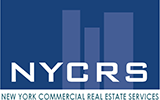The space improvements put in place per the tenant's specifications. Takes into consideration the amount of Tenant Finish Allowance provided for in the lease agreement. See also "Tenant Improvement Allowance"
Building Standard Plus Allowance
The landlord lists, in detail, the building standard materials and costs necessary to make the premises suitable for occupancy. A negotiated allowance is then provided for the tenant to customize or upgrade materials. See also "Workletter".
Building Standard
A list of construction materials and finishes that represent what the Tenant Improvement (Finish) Allowance/Work Letter is designed to cover while also serving to establish the landlord's minimum quality standards with respect to tenant finish improvements within the building. Examples of standard building items are: type and style of doors, lineal feet of partitions, quantity of lights, quality of floor …
Building or “Core” Factor
Represents the percentage of Net Rentable Square Feet devoted to the building's common areas (lobbies, rest rooms, corridors, etc.). This factor can be computed for an entire building or a single floor of a building. Also known as a Loss Factor or Rentable/Usable (R/U) Factor, it is calculated by dividing the rentable square footage by the usable square footage. See …
Building Code
The various laws set forth by the ruling municipality as to the end use of a certain piece of property and that dictate the criteria for design, materials and type of improvements allowed.
Building Classifications
Building classifications in most markets refer to Class "A", "B", "C" and sometimes "D" properties. While the rating assigned to a particular building is very subjective, Class "A" properties are typically newer buildings with superior construction and finish in excellent locations with easy access, attractive to credit tenants, and which offer a multitude of amenities such as on-site management or …
Below-grade
Any structure or a portion of a structure located underground or below the surface grade of the surrounding land.
Base Year
Actual taxes and operating expenses for a specified base year, most often the year in which the lease commences. Once the base year expenses are known, the lease essentially becomes a dollar stop lease.
Base Rent
A set amount used as a minimum rent in a lease with provisions for increasing the rent over the term of the lease. See also "Escalation Clause", "Operating Expense Escalation" and "Percentage Lease".
Bankruptcy
Proceedings under federal statures to relieve a debtor who is unable or unwilling to pay its debts. After addressing certain priorities and exemptions, the bankrupt's property and other assets are distributed by the court to creditors as full satisfaction for the debt. See also: "Chapter 11".
